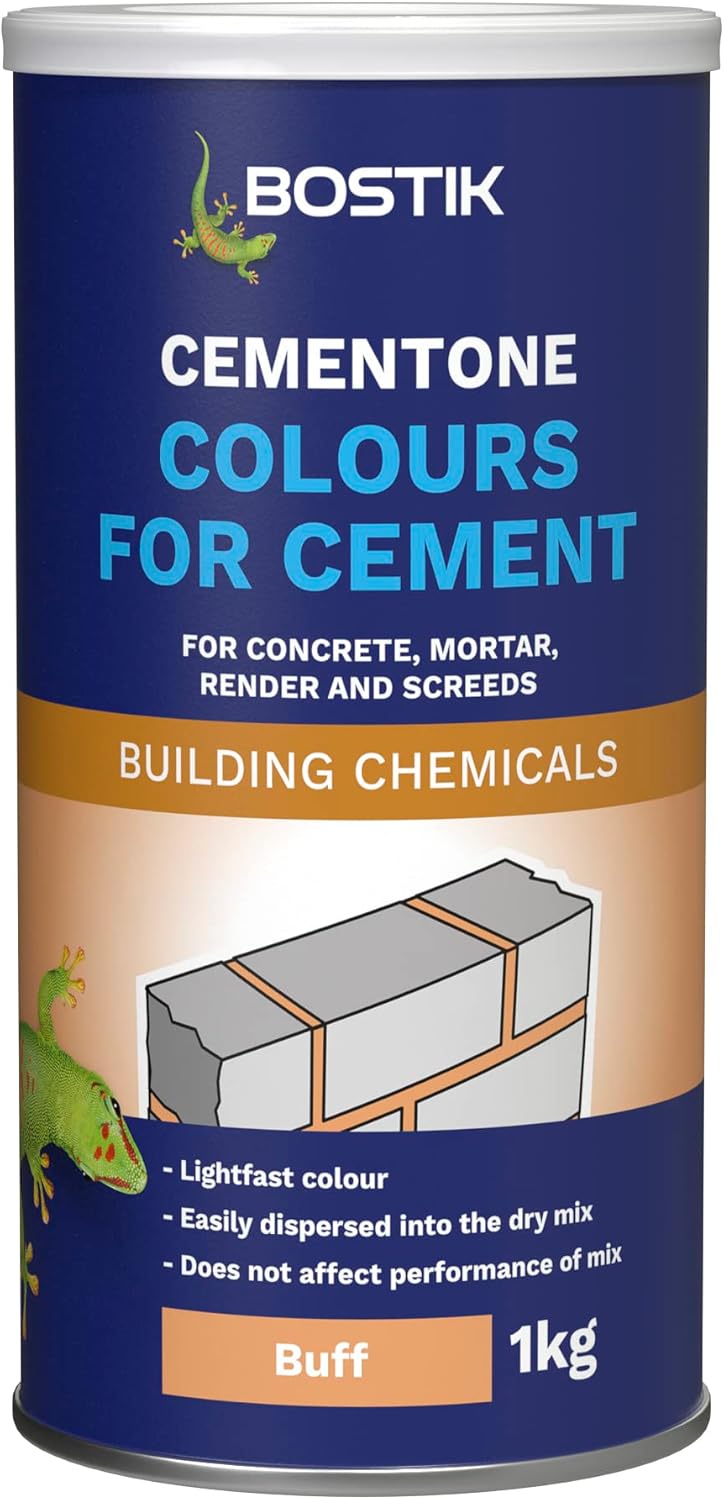
Bostik Colours for Cement, For Concrete, Mortar, Render and Screeds, Available in 5 Intermixable Colours, For Interior and Exterior Use, Colour: Buff, Size: 1kg
FREE Shipping
Bostik Colours for Cement, For Concrete, Mortar, Render and Screeds, Available in 5 Intermixable Colours, For Interior and Exterior Use, Colour: Buff, Size: 1kg
- Brand: Unbranded

Description
Mortar tints, however are slightly different in that they tend to come in concentrated liquid form that you then dilute to a point until you get a colour match. On having a close look at the sand, pay attention to the size of the particles. If they are fairly small and of a uniform size, then it most cases this will be a standard building sand. However if small visible stone chips of varying sizes are evident this may indicate the possible use of sharp sand. Step 8 – Dispose of Acid Solution Once the colour is matched as closely as possible, the tint is then brushed onto the mortar after it has been applied and fully cured where it then dyes and colours it. Essentially you have to repeat the above process e.g. creating several different mixes but adding the required dye or tone colour in different quantities until you have a decent colour match. Get in touch with any local historians or custodians of local monuments or historic buildings as it is likely that they will know exactly where the majority of original materials used were sourced from.
However, if the mortar is very light in colour then this suggests that either a white cement (aka Snowcrete) or lime has been used. After you have created each mix, take a sample and place it on a scrap piece of wood. Do this for each mix until you have a long line of samples. Label each mix e.g. 3:1, 4:1 etc. so you know which is which and then leave them to fully dry.Essentially, there is no science involved in matching a sand and cement mix to that of your existing wall or property, it’s really just a question of trial and error and also possibly a little research.
One thing to be aware of is that it is important to mix the dye into the cement before you add the water. Firstly, start with a 3:1 mix (3 sand to 1 cement) and then a 3½:1 (3½ sand to 1 cement), then a 4:1 mix (4 sand to 1 cement), then a 4½:1 mix (4½ sand to 1 cement) and so on, all the way up to a 6:1 mix. Don’t be tempted to use anything too heavy or blunt for this. If you get too carried away you will grind the actual sand particles down too much and have nothing to compare other than a pile of dust. Step 3 – Mix Muriatic Acid Solution As with finding an existing mix ratio, quite a bit of experimentation is needed to get a good match. You now need to drain off your sand solution. Using a container with a fairly large mouth that can again be sealed, stretch an old pair of tights over the mouth and secure it with a strong elastic band.Ask if you can have a small sample of each so that you can run some colour matching experiments (more on this later). Its boring and time consuming, but if you do not want your repairs to stand out a mile off, it has to be done! This may take a day or so but you will need to be patient as each one needs to be fully dried to get an exact colour.
As we have mentioned, as the sand used in a mix makes up the bulk of the actual mix itself, it has the greatest effect on the overall colour, so to get a good match, it’s really essential to identify it. Concrete mix coloured grey due to colour of the cement used What Other Factors Affect Mortar Colour? Place the sand on an old sheet/cloth and leave it somewhere out of the way to fully dry off. Once dry, pop it into a clear sealed jar or container. Step 7 – Match the Sample The last job now is to dispose of your acid solution. As this is classed as hazardous waste DO NOT simply pour it down the drain! It needs to be disposed of safely and correctly.In some cases it is possible to take a sample of the original mortar, break it down and separate out the sand. With a sample of the original sand to hand you can then use it to compare against sand from different sources until you find an exact or very close match. Step 1 – Get Samples With your solution prepared, pour in the course dust that you created earlier and stir it around to mix it up fully. Step 4 – Wait for Results If mortar colour is not matched precisely, any type of repair to a wall is made immediately obvious and stands out like a sore thumb. Over time, weathering, lichen growth etc. will eventually dull the visually differences but this can take many, many years. I wonder if I need a different cement, to include lime not snowcrete, a different colour sand? If anyone can help I'd be grateful.
- Fruugo ID: 258392218-563234582
- EAN: 764486781913
-
Sold by: Fruugo
